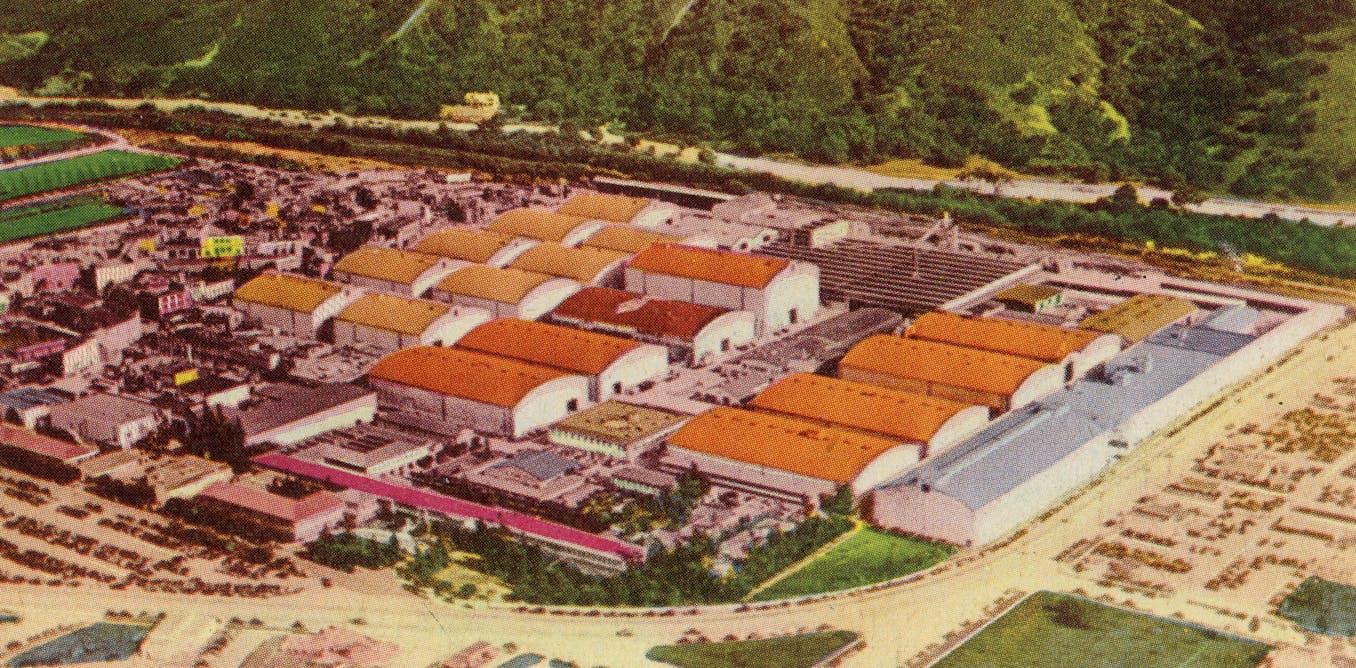What JUST HAPPENED In Israel Shocked Atheists!
Israel is at the center of a global crisis that could change history forever. The conflict between the Muslims and the Jews over the Temple Mount, the holiest site for both religions, is escalating to a dangerous level. Could this be the fulfillment of the Messianic prophecies about the end times? Or is this just a prelude to more horrors to come? Join us as we explore the truth behind the final warning from Israel that has sent shockwaves to the world!
israel,the euphrates river,shocking news,israel news,religious people,ancient history,history,discovery,beyond discovery,Judaism,Christianity,Islam,world,shocked religious people,spirituality,happened,heppened in Israel,final warning israel,final,warning,final warning
Watch the video by Beyond Discovery
Israel’s startling warning about the fulfillment of end-time prophecies has sent shockwaves around the globe. Amidst the ongoing Israel-Hamas war, which tragically claimed over 15,000 lives in Gaza, a new and unexpected challenge has emerged within Israel’s borders. Jews across the country have united to claim their ancestral homeland and have started
Building a sacred place of worship. This situation begs the question: What is the significance of the proposed third temple, and why is there a push for its construction at this time? Will the Muslim community allow the construction of this temple on the disputed site? Let’s find out!
BODY Mount Moriah holds a profound significance in the history of Israel’s major religions. It is the place where Abraham, the revered figure in Judaism, Christianity, and Islam, demonstrated his unwavering devotion to God. It was also the site where David purchased a threshing floor, and later, his son Solomon
Constructed the first temple to honor God on that very spot. Tragically, the first temple, known as Solomon’s Temple, was destroyed by the Babylonians. However, after the Jewish people were freed from Babylonian captivity, they rebuilt the temple as a testament to their resilience.
Later, King Herod undertook a remodeling project, resulting in the construction of the second temple, which became a cherished place for countless Jewish worshippers seeking solace and forgiveness. Although the second temple was eventually destroyed, the Jewish community has never abandoned their deep desire to rebuild the temple on Mount Moriah, which is now referred
To as Temple Mount. This enduring determination spans thousands of years, as they strive to reclaim their ancestral birthright and establish the temple in its rightful place. Israel’s final warning regarding this matter has instilled fear and apprehension on a global scale.
Keep watching to understand the context behind the temple’s restoration and what it means for the world. The concept of the Third Temple holds immense significance in various religious prophecies, weaving together the threads of history and contemporary events. These prophecies, echoing through time, envision the return of Jesus Christ and the construction
Of this significant structure, symbolizing spiritual rebirth and divine intervention. However, the realization of this prophecy faces numerous obstacles, with a central challenge arising from the proposed location of the Third Temple on the Temple Mount in Jerusalem, which clashes directly with the revered Islamic structure, the Dome of the Rock.
This holy site, claimed by both Jewish and Muslim communities, serves as a testament to the enduring complexities of religious coexistence and territorial authority. The desire to rebuild the Third Temple holds profound cultural and spiritual significance, particularly within the Orthodox Jewish community, magnifying the importance of this prophecy in the present context.
Yet, the clash over the Temple Mount has fueled a longstanding dispute, triggering geopolitical tensions between Israelis and Palestinians and complicating the endeavor to reclaim this sacred space for the construction of the Third Temple. The intricacies surrounding this proposed construction extend beyond mere physical boundaries
And delve into the heart of a multifaceted geopolitical issue with global repercussions. Some nations refrain from recognizing Jerusalem as Israel’s capital, intensifying the complexities surrounding the legitimacy and control of the Temple Mount, thus hindering the seamless realization of this prophecy. This conflict is not merely about physical structures; it encapsulates diverging beliefs,
Religious sentiments, and historical claims, underscoring the profound spiritual connections people hold with this site. The envisioned reconstruction symbolizes the re-establishment of a sacred site integral to the Jewish faith, reviving ancient prophecies and breathing life into historical significance. The alignment of historical religious predictions with contemporary events in the quest for
The Third Temple underlines the ongoing saga of this spiritual odyssey. The desire to rebuild and reclaim a revered site while navigating through intricate religious and geopolitical hurdles reflects the enduring quest for spiritual fulfillment and the intricate interplay between faith, history, and territorial disputes.
The prophecy of the Third Temple, intertwined with the anticipation of Jesus’s return, stands as a testament to the enduring power of belief, manifesting itself through a complex web of historical significance and contemporary challenges that reverberate across borders, ideologies, and time itself.
The conflict over the Temple Mount in Jerusalem has triggered a complex and sensitive geopolitical situation entangled in the enduring disputes between Israelis and Palestinians. This sacred site, revered by both Jewish and Muslim communities, holds immense religious significance, birthing a conflict entrenched in territorial claims and historical narratives.
At the heart of this dispute lies the battle for authority over the Temple Mount. Israelis and Palestinians fiercely contest ownership and control, with each viewing the site as an integral part of their respective cultural and religious heritage. This contention goes beyond mere land; it embodies centuries-old grievances and deeply
Rooted beliefs, further heightening tensions in the region. The desire to build the Third Temple, a significant aspiration for the Jewish community, faces formidable challenges due to the presence of Muslim individuals on the Temple Mount. These individuals, often dressed in traditional attire, pose a barrier to Jewish worshippers
Seeking access to their sacred space, exacerbating the already intricate web of religious and political contention. This conflict extends beyond a mere struggle for physical space; it encompasses the essence of identity, faith, and sovereignty. The Temple Mount, a revered symbol for both Jews and Muslims, has become a microcosm of
The broader Israeli-Palestinian conflict, intensifying geopolitical tensions in the region and beyond. Efforts to find a resolution stumble upon deeply entrenched narratives, making the path to mutual understanding and compromise difficult. The geopolitical implications reverberate across international borders, drawing attention from global powers vested in the stability of the Middle East.
Amid this complex geopolitical situation, the quest for access to religious sites becomes a symbol of broader struggles for identity and self-determination. The intricate dance between religious freedoms, territorial claims, and historical grievances continues to shape the landscape of this contentious region, highlighting the challenges inherent
In navigating a delicate geopolitical terrain embroiled in religious fervor and historical significance. Ultimately, the complex geopolitical dynamics stemming from disputes over the Temple Mount underscore the deep-seated divisions, emphasizing the imperative need for dialogue, and mutual respect to navigate the path towards a peaceful coexistence.
To explore the reason behind Israel’s final warning, let us introduce you to the epicenter of centuries-long strife –Jerusalem! What Is The Significance of Jerusalem? Jerusalem, a city of profound significance to the world’s three largest monotheistic religions, is a captivating blend of sacred relics, historic figures, and holy sites.
Its allure is heightened by a centuries-old power struggle that continues to shape its complex identity. To truly grasp the essence of Jerusalem, we must delve into its rich history. With a history dating back over 4,400 years, Jerusalem has weathered the ravages of time.
It has been destroyed on multiple occasions, changed hands countless times, and currently exists in a state of contentious legal status. However, the Jerusalem of antiquity differs vastly from the present-day city. Today, when we refer to the Old City of Jerusalem, we are referring to the biblical Jerusalem,
Which is part of occupied East Jerusalem. Within its walls lie the hallowed grounds that house the Church of the Holy Sepulchre, the Western Wall, and the Al-Aqsa Mosque. The latter two occupy a shared space known as the Temple Mount. For Christians, the Church of the Holy Sepulchre holds profound significance, as it houses
Two of the holiest sites in Christianity. Calvary, the site of Jesus’s crucifixion, and the empty tomb where he was buried and resurrected are revered by followers of the faith. Jerusalem’s association with Jesus Christ renders it a sacred city in Christian theology.
Other revered Christian sites within Jerusalem include the Via Dolorosa, believed to trace the path Jesus walked while carrying the cross, the garden of Gethsemane, where Jesus prayed before his arrest, and the Mount of Olives, from which he is said to have ascended to heaven.
These sacred sites make Jerusalem an essential pilgrimage destination for Christians, imbuing the city with profound spiritual meaning. Likewise, Judaism holds Jerusalem in the highest regard. The Temple Mount, the most sacred site in Judaism, is believed to be the place where God’s divine presence is most palpable.
The Western Wall, a relic from the Second Temple, serves as a site of prayer and pilgrimage for Jews worldwide. Jerusalem’s association with the First and Second Temples, which were at the heart of Jewish worship, is deeply ingrained in the faith. Furthermore, the city is revered as the location where Abraham demonstrated unwavering devotion
And sacrifice through his offering of Isaac to God. Islam, too, attaches immense importance to Jerusalem, particularly to the Noble Sanctuary. The Dome of the Rock, situated within the sanctuary, is believed to mark the spot from which the Prophet Muhammad ascended to heaven.
The Al-Aqsa Mosque, the third holiest mosque in Islam, adds to the religious significance of Jerusalem for Muslims across the globe. While these cherished holy sites have long attracted pilgrims and historians, the city itself has been a crucible of political and religious tensions.
Jerusalem’s complexity lies in its intertwining of religious heritage and modern-day realities. It has witnessed the ebb and flow of empires, the clash of civilizations, and the relentless struggles for power and control. Today, Jerusalem remains at the epicenter of a contentious dispute between Israel and Palestine.
Following the Six-Day War in 1967, Israel assumed control over most of the city, including East Jerusalem, which is considered part of the occupied Palestinian territory and encompasses the Old City. Despite international law affirming that this land does not belong to Israel, they have maintained control for the past five decades.
The intricate tapestry of Jerusalem is further unraveled through its geographical layout. Once divided into five distinct districts—the Muslim Quarter, Christian Quarter, Armenian Quarter, Moroccan Quarter, and Jewish Quarter—the Old City underwent a transformation after the Six-Day War. Israeli forces bulldozed the ancient Moroccan Quarter to create access to the Western Wall,
Adding another layer of complexity to the city’s history and fueling the tensions that persist to this day. The challenges faced by the religious communities in Jerusalem are multifaceted. For Jews, the destruction of the first and second temples left a void in their worship
Practices, leading to the proposal to build the Third Temple as a successor to its predecessors. However, the realization of this proposal has proven to be an immensely challenging endeavor. What Shocking Discovery Confirms The Jews Claim To Jerusalem? The astonishing revelation that corroborates the Jews’ claim to Jerusalem has sent shockwaves
Through the historical community. The unearthing of ancient artifacts beneath the revered Temple Mount has breathed fresh life into the age-old narrative, providing a captivating and thought-provoking perspective on the site’s profound historical and religious importance. One of the most remarkable findings amidst the archaeological excavation is the discovery
Of a Jewish ritual bath, known as a mikvah, hidden beneath the Al Aqsa Mosque. This astonishing revelation challenges conventional wisdom and presents a compelling contradiction to long-held beliefs about the site’s past. The presence of a mikvah, intimately associated with Jewish purification rituals, beneath
An Islamic structure like the Al Aqsa Mosque has ignited fervent discussions and debates among esteemed historians and religious scholars. These archaeological breakthroughs go beyond mere relic excavation; they signify a paradigm shift in our understanding of the Temple Mount’s historical and religious significance.
The revelation of the mikvah serves as a testament to the intricate layers of history intricately woven into the tapestry of this sacred site, transcending the constraints of time and offering a captivating glimpse into the interwoven narratives of various religious traditions. The newfound artifacts forcefully challenge preconceived notions that have shaped perceptions
Of the Temple Mount for centuries. They compel us to reevaluate historical accounts and embark on a profound reassessment of the site’s multifaceted past. This transformative shift in understanding beckons scholars and historians to revisit and reinterpret the complex history and religious heritage associated with this revered location.
These discoveries shed an exhilarating new light on the interfaith and intercultural dynamics that have unfolded upon the Temple Mount. They signify the coexistence and convergence of diverse religious practices and beliefs throughout history, painting a more intricate and nuanced picture of the interactions between different religious communities within this sanctified space.
The revelation of ancient artifacts, particularly the mikvah concealed beneath the Al Aqsa Mosque, acts as a catalyst for reimagining the historical narrative of the Temple Mount. It defies established beliefs, fosters a deeper appreciation for the site’s layered history, and underscores the intricate interplay between diverse religious traditions that have converged
Upon this hallowed ground throughout the ages. These extraordinary discoveries serve as a resounding reminder of the richness and diversity encompassed within the historical tapestry of the Temple Mount. How Have The Jews Proven Their Preparedness Towards The Reconstruction Of The Third Temple?
The recent arrival of five remarkable red heifers in Israel from Texas has stirred up a great deal of excitement and interest, particularly among those who attach profound significance to Jewish purification rituals associated with the construction of the Third Temple.
These red heifers, totaling five in number, hold a special place in Jewish tradition due to their role in purification rites outlined in ancient texts. Their arrival in Israel is viewed by many as a potential fulfillment of prophecy, reigniting discussions and drawing attention to the long-awaited construction of the Third Temple in Jerusalem.
In Jewish belief, the red heifer plays a crucial role in purification ceremonies, especially for the Kohanim priests. According to Jewish law, these heifers must possess specific characteristics, notably being entirely red and without any blemishes. If these heifers remain flawless, their ashes can be used in purification rituals, an essential
Aspect for the future operation of the Third Temple. The significance of these red heifers extends beyond their adherence to ancient laws; it also lies in their perceived alignment with prophetic texts that foretell the rebuilding of the Third Temple. This convergence of ancient prophecy with the tangible arrival of these sacred animals
Has heightened anticipation and excitement among those who follow and revere these prophecies. Their arrival has breathed new life into discussions about the imminent construction of the Third Temple, shining a spotlight on the spiritual and religious significance associated with this monumental undertaking.
It has reignited hope and fervor among believers who interpret these events as signaling a step closer to the realization of long-standing prophecies. The arrival of these red heifers from Texas to Israel has rekindled ancient beliefs and prophetic expectations, stirring curiosity and speculation about the impending construction of the Third Temple.
Their presence serves as a tangible symbol and a catalyst for renewed discussions and contemplations about the fulfillment of ancient prophecies, resonating deeply within the hearts of those who await the realization of these revered predictions. The ongoing efforts directed at reconstructing the Third Temple encompass a multifaceted
Approach that delves into historical rituals, reviving ancient ceremonies integral to its future construction. Among these efforts, the revival of old rituals, such as the water ceremony, stands as a prominent example. One such ritual, the water ceremony, holds significant meaning within the context of the anticipated Third Temple.
This ritual involves symbolic acts, like the pouring of water, reminiscent of ancient practices linked to the temple’s ceremonies. Efforts to recreate and reenact these age-old rituals reflect a deep commitment to honoring historical traditions and laying the groundwork for the temple’s reconstruction.
The discovery and rediscovery of significant historical sites, such as the ancient Pool of Siloam, contribute valuable context and weight to religious celebrations, notably during festivals like Sukkot. The ancient Pool of Siloam, an archaeological gem, holds deep-rooted historical importance, offering insights into past religious customs and practices.
During festivals like Sukkot, the rediscovery of the Pool of Siloam becomes particularly poignant, evoking the historical resonance of ancient celebrations and their ties to this revered site. The Pool of Siloam’s relevance during these festivals, commemorating historical events and offering spiritual significance, adds depth and authenticity to religious observances,
Underscoring the importance of historical context in modern religious practices. The ongoing efforts directed at reconstructing the Third Temple encompass not only the physical aspects of rebuilding but also the revival of ancient rituals integral to its historical and spiritual significance.
Rediscoveries of sites like the Pool of Siloam serve as a poignant reminder of the rich historical tapestry woven into religious celebrations, infusing these rituals with a profound sense of connection to the past. These initiatives underscore a deep reverence for history and tradition, breathing life
Into ancient practices and laying the groundwork for a cultural and spiritual revival tied to the anticipated reconstruction of the Third Temple. The symbolic essence of the Red Heifer’s purification rituals holds profound significance within religious beliefs and intertwines with the anticipation of the Messiah’s arrival in certain faith traditions.
Rooted in biblical references, these rituals bear immense weight, symbolizing purity, renewal, and the potential to usher in a transformative era. The Red Heifer, steeped in religious symbolism, aligns with ancient texts and prophecies, particularly in Jewish tradition. Its role in purification rituals, as outlined in sacred scriptures, underscores its pivotal
Importance in preparing for sacred duties and spiritual cleanliness. These rituals carry symbolic weight, signifying the removal of impurities and a pathway toward spiritual renewal, fostering hope for a transcendent future. The convergence of recent events, archaeological discoveries, ongoing ceremonies, and the arrival
Of the Red Heifers aligns with ancient prophecies, sparking fervent discussions about Israel’s pivotal role in religious prophecy. For devout believers, the rebuilding of the Temple holds immense significance as it represents the realization of ancient prophecies. It is viewed as a pivotal milestone on the path towards biblical events and the impending
Culmination of human history. According to these prophecies, once the Temple is reconstructed, a period of relative tranquility and abundance is expected to ensue before the emergence of a new leader. This leader, often identified as the Antichrist, would forge political and religious alliances
With world figures, rallying support for the construction of the Third Temple. Consequently, those who embrace his teachings would eagerly participate in the arduous task of rebuilding. Scholars who meticulously analyze biblical texts offer their interpretations, shedding light on the significance of the rise of the Antichrist.
This momentous event is widely believed to herald the onset of the end days. In this apocalyptic scenario, the events leading up to the climactic battle of Armageddon would unfold, pitting the forces of the Antichrist against those of Jesus Christ. Armageddon, rooted in Christian scripture, symbolizes the ultimate clash between good and evil.
While the Book of Revelations vividly narrates this epic confrontation, scholarly discourse persists regarding whether Armageddon refers to a specific geographical location or serves as a metaphor for the battle itself. Nevertheless, the crux of the matter lies in the conviction that these events signify
The fulfillment of profound biblical prophecies and the culmination of human history. To many believers, the reconstruction of the Temple assumes paramount importance as it embodies the fulfillment of these prophecies and represents a critical stride towards the impending end of days.
The rise of the Antichrist and the subsequent sequence of events leading to the battle of Armageddon serve as vital components within this prophetic framework. While diverse interpretations and ongoing debates persist, the underlying significance rests in the steadfast belief that these events constitute the realization of ancient predictions
And the ultimate establishment of Jesus Christ’s reign. Thanks for watching another episode of Beyond Discovery! While you’re still here, click on the other videos you see on your screen right now.
About Beyond Discovery
Welcome to Beyond Discovery where we explore the most interesting topics about Disocvery, Space, Science, Technology, and more! Join as we explore the worlds hidden wonders!
Video “What JUST HAPPENED In Israel Shocked Atheists!” was uploaded on 12/14/2023 to Youtube Channel Beyond Discovery





































